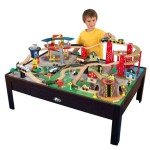Essential Aspects of Vegetable Garden Design for Small Gardens
Creating a vegetable garden in a small space can be a rewarding experience, providing fresh and nutritious produce right at your fingertips. Here are some essential aspects to consider when designing your small garden:
Planning
Before you start planting, it's essential to plan out your garden carefully. Consider the amount of sunlight, soil quality, and space you have available. Sketch out a design on paper or use online planning tools to help you visualize the layout.
Vertical Gardening
When space is limited, vertical gardening is a great way to maximize growing area. Utilize trellises, hanging planters, or wall-mounted containers to grow plants vertically. Climbing plants such as beans, peas, and tomatoes are ideal for this method.
Companion Planting
Companion planting is a technique where different plants are grown together to benefit each other. For example, planting basil next to tomatoes can help repel insects. Research companion planting combinations to optimize space and increase plant growth.
Succession Planting
Succession planting involves planting several rounds of different vegetables throughout the growing season. This allows you to harvest a continuous supply of fresh produce. For example, plant fast-growing vegetables like radishes or lettuce in early spring, followed by tomatoes or peppers later on.
Efficient Plant Combinations
Choose vegetables that are compatible in terms of size, growth habit, and nutrient requirements. For example, planting compact varieties of tomatoes or cucumbers can save space without compromising yield. Interplanting smaller, quick-growing vegetables between larger ones can also maximize production.
Soil Health
Healthy soil is essential for plant growth. Amend your soil with organic matter such as compost or manure to improve drainage, fertility, and water retention. Regular mulching can help suppress weeds, conserve moisture, and add nutrients to the soil.
Water Conservation
Water is a precious resource, especially in small gardens. Utilize techniques such as drip irrigation or soaker hoses to water plants directly at the roots, minimizing evaporation and water waste.
Maintenance
Regular maintenance is crucial to keep your vegetable garden thriving. Remove weeds, prune plants, and harvest produce as needed. Stay vigilant for pests and diseases, and take prompt action to prevent spread and damage.
By incorporating these essential aspects into your vegetable garden design, you can create a productive and enjoyable outdoor space that provides fresh and delicious produce for your kitchen.

Small Vegetable Garden Ideas Gate

Small Vegetable Garden Ideas Gate

Small Vegetable Garden Ideas Tips Design

Small Vegetable Garden Ideas Gate

Small Vegetable Garden Ideas 15 Ways To Maximize Your Space

Small Vegetable Garden Ideas Tips Design

Vegetable Garden Layout 7 Best Design Secrets A Piece Of Rainbow

20 Best Vegetable Garden Layout Ideas Planning Plot

80 Affordable Backyard Vegetable Garden Design Ideas Home Small Gardens

36 Amazing Ideas For Growing A Vegetable Garden In Your Backyard Small Design Gardens








